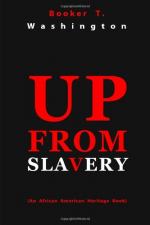General Armstrong asked me to take charge of the night-school, and I did so. At the beginning of this school there were about twelve strong, earnest men and women who entered the class. During the day the greater part of the young men worked in the school’s sawmill, and the young men worked in the laundry. The work was not easy in either place, but in all my teaching I never taught pupils who gave me much genuine satisfaction as these did. They were good students, and mastered their work thoroughly. They were so much in earnest that only the ringing of the retiring-bell would make them stop studying, and often they would urge me to continue the lessons after the usual hour for going to bed had come.
These students showed so much earnestness, both in their hard work during the day, as well as in their application to their studies at night, that I gave them the name of “The Plucky Class”—a name which soon grew popular and spread throughout the institution. After a student had been in the night-school long enough to prove what was in him, I gave him a printed certificate which read something like this:—
“This is to certify that James Smith is a member of The Plucky Class of the Hampton Institute, and is in good and regular standing.”
The students prized these certificates highly, and they added greatly to the popularity of the night-school. Within a few weeks this department had grown to such an extent that there were about twenty-five students in attendance. I have followed the course of many of these twenty-five men and women ever since then, and they are now holding important and useful positions in nearly every part of the South. The night-school at Hampton, which started with only twelve students, now numbers between three and four hundred, and is one of the permanent and most important features of the institution.
Chapter VII. Early Days At Tuskegee
During the time that I had charge of the Indians and the night-school at Hampton, I pursued some studies myself, under the direction of the instructors there. One of these instructors was the Rev. Dr. H.B. Frissell, the present Principal of the Hampton Institute, General Armstrong’s successor.
In May, 1881, near the close of my first year in teaching the night-school, in a way that I had not dared expect, the opportunity opened for me to begin my life-work. One night in the chapel, after the usual chapel exercises were over, General Armstrong referred to the fact that he had received a letter from some gentlemen in Alabama asking him to recommend some one to take charge of what was to be a normal school for the coloured people in the little town of Tuskegee in that state. These gentlemen seemed to take it for granted that no coloured man suitable for the position could be secured, and they were expecting the General to recommend a white man for the place. The next day General




